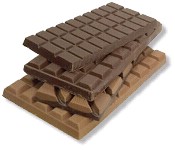  Chocolate comes in a variety of forms, but all chocolate originates from the bean of the tropical cacao (or cocoa) tree. The seeds from inside the beans are fermented, dried, roasted, ground, and pressed to remove fat; what's left is cocoa powder. A Short History of Chocolate 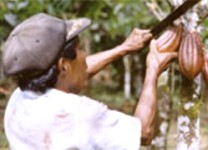 Cocoa trees have grown naturally in the tropical areas of South and Central America for thousands of years. Long before cocoa was discovered by Europeans, the Maya Indians, perhaps as early as 2600 years ago, used cocoa beans to make a type of chocolate drink; they also used the beans as currency. The botanical name for cocoa is 'Theobroma cacoa' with Theobroma meaning 'God food'. The word 'chocolate' comes from their word 'xocolatl', meaning 'bitter water'. Cocoa trees have grown naturally in the tropical areas of South and Central America for thousands of years. Long before cocoa was discovered by Europeans, the Maya Indians, perhaps as early as 2600 years ago, used cocoa beans to make a type of chocolate drink; they also used the beans as currency. The botanical name for cocoa is 'Theobroma cacoa' with Theobroma meaning 'God food'. The word 'chocolate' comes from their word 'xocolatl', meaning 'bitter water'.Not only did the mayans harvest the beans, but they also cleared areas in the forest and planted their own cocoa trees. Their drink was made from roasted cocoa beans, water, and spices. Later the Aztecs, living in what is now Mexico, also used cocoa beans for chocolate drinks which were 'reddish, foamy and bitter', often flavoured with vanilla and honey. The Aztecs couldn't grow their own cocoa trees due to the dry climate where they lived, but instead obtained beans from others, through trade or as collected 'taxes'. They too made a chocolate drink from the beans, adding , chili peppers for extra spiciness.  Christopher Columbus may have brought the first cocoa beans back to Europe from the New World some time in the early 1500's.
However, the Spanish Conquistador Cortez was the first to realize the commercial value of cocoa. He brought them to Spain in
1528, and from there the custom of drinking chocolate spread across Europe, reaching England in the 1650's. Cinnamon, nutmeg and sugar were added to the chocolate (and the chili peppers were left out), making the drink very popular among the wealthy. Christopher Columbus may have brought the first cocoa beans back to Europe from the New World some time in the early 1500's.
However, the Spanish Conquistador Cortez was the first to realize the commercial value of cocoa. He brought them to Spain in
1528, and from there the custom of drinking chocolate spread across Europe, reaching England in the 1650's. Cinnamon, nutmeg and sugar were added to the chocolate (and the chili peppers were left out), making the drink very popular among the wealthy.
An English doctor, Sir Hans Sloane, brought a milk chocolate recipe back to England ... the original Cadbury Milk Chocolate was prepared to his recipe. Soon the recipe was available to everyone who could afford it; fashionable 'chocolate houses' were opened where people could meet friends and enjoy rich chocolate drinks. At this point the chocolate drinks were still quite bitter. Cocoa trees need tropical conditions to thrive. As the popularity of chocolate grew, the number of cocoa growing countries in the world increased. Cocoa plantations were started in the West Indies, the Far East and Africa. Eventually the price of cocoa beans began to drop. By the mid 1800's, chocolate became available to most of the population. Some of the earliest chocolate makers were apothecaries (chemists) who were interested in the supposed medicinal properties of cocoa. Fry's chocolate, for example, was founded by apothecaries. Other manufacturers became involved in chocolate making as a sideline to their other importing businesses. John Cadbury, for instance, began by trading in tea and coffee, and soon branched into cocoa. Chocolate was consumed only by drinking until early Victorian times, when a technique was perfected for making solid chocolate that could be eaten. The inventor of chocolate for eating is unknown, but in 1847, Fry's created the very first chocolate bar. John Cadbury sold a similar product in 1849. However, neither type of chocolate was particularly tasty by today's standards ... we would consider them very bitter. Cocoa butter, also extracted from the cocoa beans, is the necessary ingredient for making 'eating chocolate'. The Cadbury Brothers developed a recipe using cocoa butter, which produced chocolate very similar to today's product. Originally only plain dark chocolate could be made, but in 1875 a Swiss manufacturer produced the first milk chocolate bar using powdered milk. These first chocolate bars were coarse and dry, made by blending milk powder with the chocolate ingredients of cocoa, cocoa butter and sugar. Improvements soon followed, noteably the addition of condensed milk rather than powdered milk, to make a chocolate that was smoother and which tasted better. 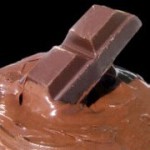 Today, about two-thirds of the world's cocoa is produced in Western Africa. The are three types of cocoa beans used in chocolate: Criollo, Forastero and Trinitario.
Today, about two-thirds of the world's cocoa is produced in Western Africa. The are three types of cocoa beans used in chocolate: Criollo, Forastero and Trinitario.Criollo, from Central America and the Caribbean, is rare and expensive; it makes up just 5% of the world chocolate market. Trinitario is a hybrid of Criollo and Forastero, originating in Trinidad. Forastero, originally native to the Amazon, is the type of bean most commonly used in the world's chocolate; the huge African cocoa crop is entirely Forastero. How Chocolate is Made 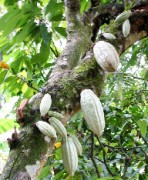 Picking, Sorting, Cleaning and Roasting: Picking, Sorting, Cleaning and Roasting:The cocoa tree produces seed pods. The pods are harvested. The seeds (beans) are removed from the pod and left in piles to ferment for as much as a week. The beans are then dried to prevent mold. Finally the beans are roasted, which brings out their characteristic aroma. 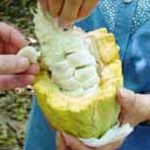
Crushing: The roasted beans are broken into very small pieces, called 'nibs', and the seed husks are removed. 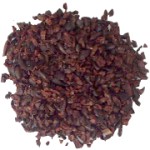 Milling: Milling:The crushed beans (nibs ... see the photo at the right) are milled (ground up) into a thick liquid, called chocolate liquor. The word 'liquor' here refers to the liquid state; the liquid contains no alcohol. It is because cocoa beans are half fat that grinding them up produces a liquid ... a similar thing happens when you grind up peanuts; real peanut butter is 'peanut liquor', a thick liquid. Chocolate liquor is pure, unsweetened chocolate, and quite bitter in taste. Poured into molds and allowed to solidify, it can be sold as unsweetened chocolate, to be used in baking. If you squeeze all the fat out of the liquor, what's left is cocoa powder. Further refinements to the liquor produce the chocolate we know: Mixing: Whole cream and pure refined sugar are added to the liquid and mixed, producing a rich chocolate paste. 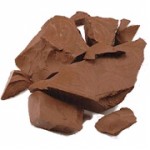 Refining:
Refining:The chocolate paste, with extra cocoa butter, is rolled and kneaded for hours. This improves the taste and makes the chocolate smooth. A final process, called conching, makes the chocolate feel smooth in the mouth. This process uses a container filled with metal beads, which act as grinders. The chocolate paste as a liquid is added to the container; the beads grind it into particles smaller than the tongue can detect. High-quality chocolate is conched for about 72 hours, lesser grades about 4 - 6. Tempering: As liquid chocolate cools to room temperature, crystals form in the fats contained in the cocoa butter. If these crystals are large, they will be visible in the chocolate, and the chocolate will appear dull in colour and will crumble when it's broken, and it will melt too easily when handled. You have probably observed these effects in chocolate that has melted and been allowed to reharden on its own. On the other hand, small crystals make the chocolate firm, shiny and easily broken, and keep it from melting too easily. Tempering is a process that carefully controls the cooling and mixing of the chocolate so that the crystals that form are as small as possible.  The finest plain dark chocolate contains at least 70% cocoa (cocoa solids and cocoa butter), while milk chocolate usually contains no more than 50% of these. High-quality white chocolate contains only about 33% cocoa. Inferior and mass-produced inexpensive chocolate can contain as little as 7% cocoa, along with fats other than cocoa butter. Why We Like Chocolate 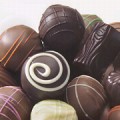 Eating chocolate is pleasurable partly because its melting point is just slightly below human body temperature ... it melts in the mouth. However, there are other reasons why we enjoy it. Eating chocolate has
been linked with release of endorphins and serotonin in the brain, which is thought to produce
feelings of pleasure. This may be similar (on a lesser scale) to the effects of opium or heroin. Eating chocolate is pleasurable partly because its melting point is just slightly below human body temperature ... it melts in the mouth. However, there are other reasons why we enjoy it. Eating chocolate has
been linked with release of endorphins and serotonin in the brain, which is thought to produce
feelings of pleasure. This may be similar (on a lesser scale) to the effects of opium or heroin.Chocolate also contains:
Chocolate and Your Health  Research suggests that eating chocolate may help prevent persistent coughing.
The ingredient theobromine was found to be almost as effective as the
leading cough medicine. Chocolate also appears to soothe and moisten the
throat. Research suggests that eating chocolate may help prevent persistent coughing.
The ingredient theobromine was found to be almost as effective as the
leading cough medicine. Chocolate also appears to soothe and moisten the
throat.Does eating chocolate aggravate acne? Apparently not. Chocolate contains anti-oxidants which help improve skin complexion. Several scientific studies have shown that frequent consumption of pure chocolate has no effect on the occurrence of acne. It is now believed that it is not chocolate that causes acne breakouts, but the milk with which it is mixed; high consumption of milk (or foods with milk products) can aggravate acne. The cocoa in chocolate is a rich source of the flavonoids epicatechin and gallic acid, which are thought to be good for the heart. Cocoa is also a significant anti-oxidant, and may also help to reduce blood pressure. Chocolate is also rich in a variety of essential minerals, including magnesium, copper, potassium and manganese. Eating dark chocolate may improve the function of cells lining the wall of blood vessels, making the blood vessels more flexible, which could help prevent hardening of the arteries leading to heart attacks. However, chocolate is also a calorie-rich food with a high fat content, so any benefits it may provide are far outweighed by the negative effects of taking in extra calories, which could include cardiovascular disease, diabetes and obesity. Interestingly, chocolate is a powerful stimulant in horses; its use is banned in horse racing. Cocoa and chocolate may in fact be toxic or lethal to dogs, horses and cats, because these animals metabolize theobromine more slowly than humans. If they are fed chocolate, especially dark chocolate, the theobromine will remain in their bloodstream for up to a day, and the animals may experience epileptic seizures, heart attacks, internal bleeding, or death. A typical 20 kg dog may merely experience stomach cramps from eating a chocolate bar, but will have much more serious symptoms from eating a half a kilogram of milk chocolate. According to the Merck Veterinary Manual, about 1.3 grams of chocolate per kilogram of a dog's body weight is toxic. with an average of 10 kg (22 pounds) per person per year. Some information obtained from www.wikipedia.org |